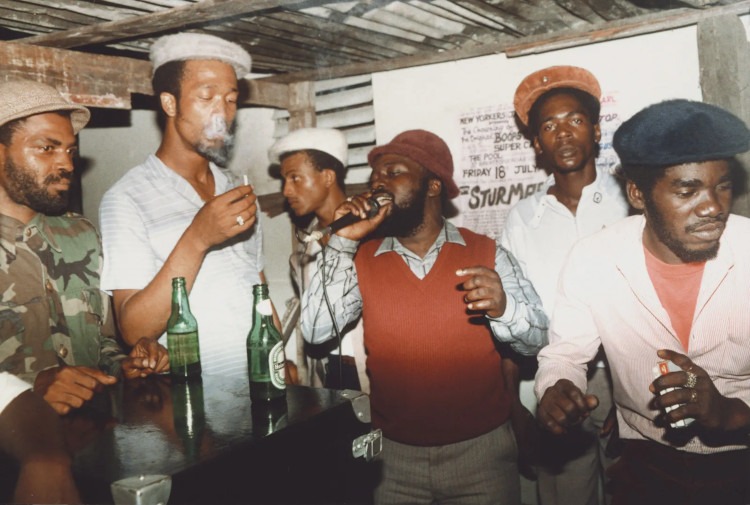“Anything imported from England or Scotland was in high demand, no matter how poorly suited to the local weather conditions. […] In sweltering 96-degree summer days, in polluted downtown Kingston, men could be seen in pure wool ‘diamond’ sweaters and socks, lined tweed caps, knitted vests and pinstripe-suite jackets”.
Canadian photographer Beth Lesser describes Kingston’s fashion trends in the early 1980s in her book “Dancehall: The Rise of Jamaican Dancehall Culture.”
Here are some key features that defined Jamaica’s dancehall fashion of the era!
The three-piece suit
The uniform for the well-dressed man in Jamaica was the three-piece suite, charcoal grey with pinstripes.
It essentially stemmed from the upper-class British style of the 1970s.
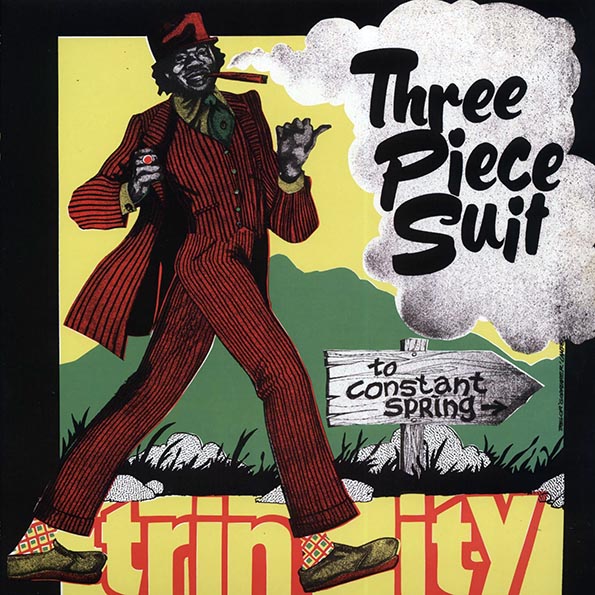
The Argyle pattern
Argyle is a multi-coloured knitted diamond pattern against a solid colour background. Originally from Scotland, the Argyle sock became popular in the United States in the 1950s as a new casual look.
But when it reached Jamaica three decades later, the diamond pattern was far from casual. It was seen as formal wear, a clear symbol of high status that was instantly recognisable.
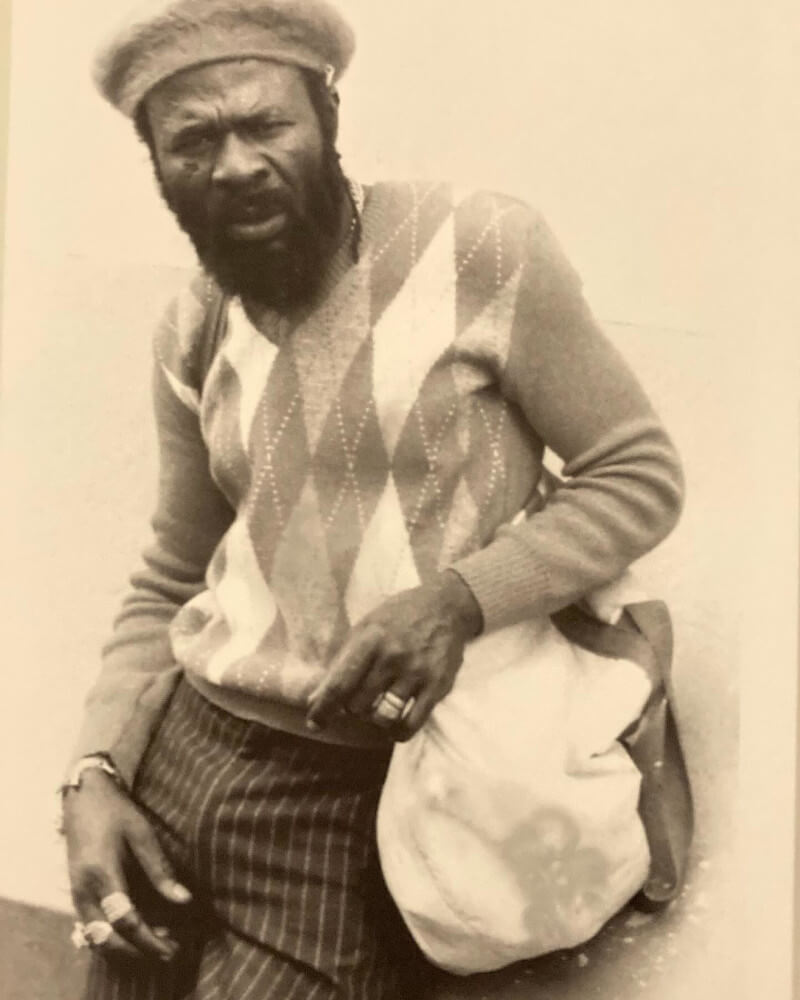
Clarks booties
When it came to stylish footwear, the trend called for English-imported Clarks ‘booties,’ a casual leather or suede shoe that extended up to the ankle.
Little John celebrated these shoes in his song named Clarks Booty.

Hats
Everyone loved hats in Jamaica, including women and children.
The Tams were very desirable accessories. Their name came from “tam o’ shanter” or “tammie”, the name of the traditional Scottish bonnet worn by men.
Junjo Lawes often sported a leather tam, while John Wayne had a hard-to-find ‘marching tam’ (black with a red pom-pom).
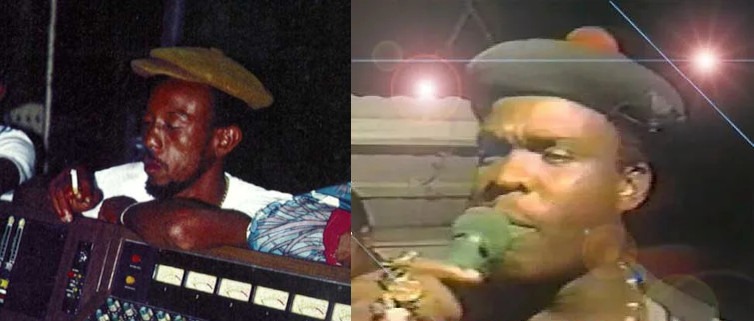
The Rasta tam was a cap knitted with large loose stitches in classic red, green and gold colours. It had the general tam shape, with or without a brim, and was broad enough to contain dreadlocks.
The Kangol style of hat took over in the mid-1980s. Inspired by the emerging hip-hop movement in the south Bronx, Dancehall entertainers in Jamaica started wearing the soft and furry brushed angora wool caps.
The trend became so popular that songs started referencing the Kangol brand, much like they previously did with Clarks. The style became such a symbol of sophistication that it even inspired a record label to adopt the name.
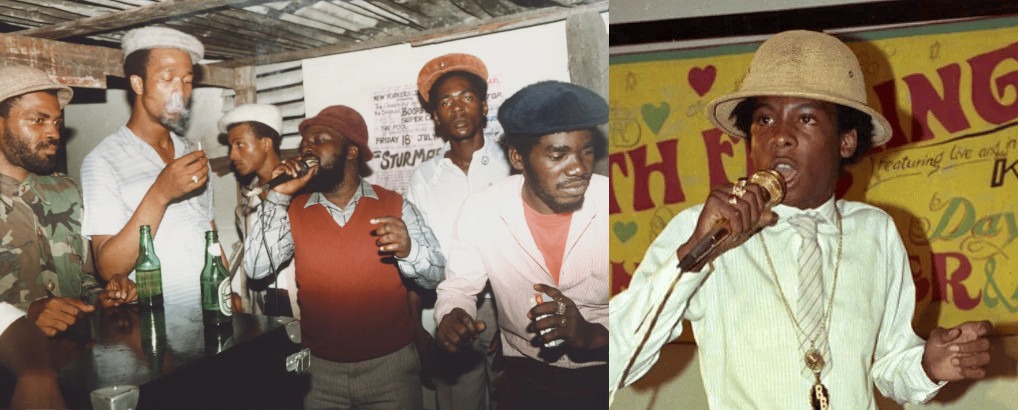
Jewels
“Bling” was mandatory for those who felt they were important people in the music business. The more, the better.
Female performers used as many gold earrings as possible. Dangling earrings often had currency symbols, while the clover or hibiscus flower covering the whole earlobe became popular later. Bangle bracelets were a must. “The idea was to wear an armful and rattle all day long”.
Male performers showed up with many rings and solid gold chains. Rope chains were the most desirable because they were the thickest. Solid gold pendants often had the shape of car symbols, the dollar sign or the island of Jamaica.
Artists were draping themselves in as many gold chains as they could borrow for their album cover photoshoots.
Yellowman, always the social satirist, wrote a song that perfectly captured the craze.
“Walking Jewellery Store” Lyrics
Yellowman a walkin’ jewellery store
Tell you once, me tell you before,
Me will walk from Kingston go over Portmore,
Fly from Jamaica, go over Singapore
Anywhere the gold, me ha’ fe get more
Me a walking jewellery store,
Yellowman a walking jewellery store.
If you look ina me ears, me have an ears ring
If you look pon me finger, 20 gold ring
If a girl want one they better kiss me pon me chin…
Me a walking jewellery store.
[…]
Source:
Dancehall: The Rise of Jamaican Dancehall Culture.” By Beth Lesser

